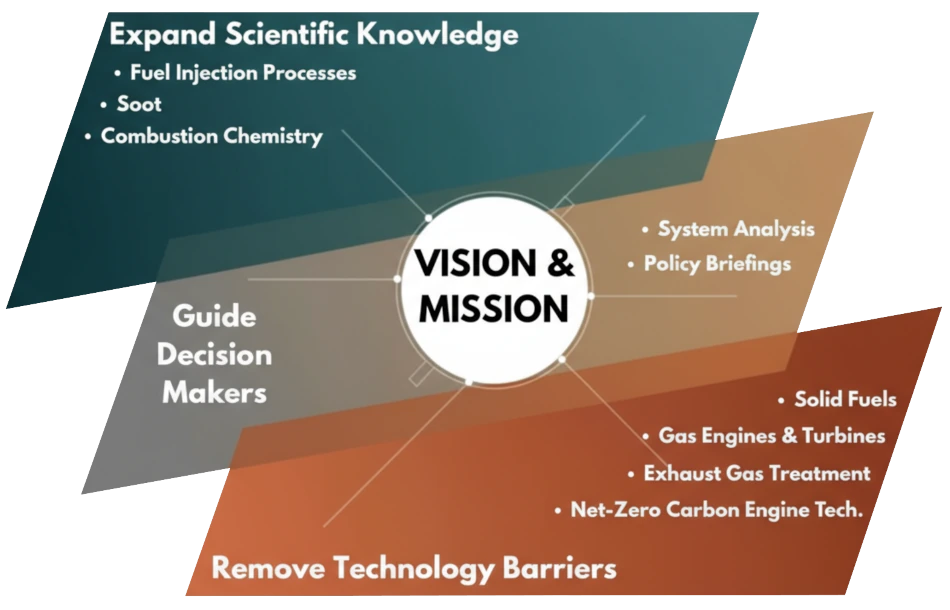About the Sustainable Combustion TCP
Unlocking the untapped potential of combustion technologies through world-class research, international collaboration, and strong industry engagement.

Foundation & Mission
Combustion technologies are vital to the global economy, powering critical sectors such as transportation, shipping, construction, agriculture, resource extraction, electricity generation, and oil and gas production. These combustion systems account for approximately 80% of global energy production today and will remain the mainstay of heavy-duty applications for decades due to their high-power density, established infrastructure, and skilled workforce.
The Sustainable Combustion TCP originated in 1976 when Britain, Sweden, and the United States established an informal agreement to exchange combustion research information during the oil crisis. This successful collaboration led to a formal IEA agreement in 1977, with Italy joining in 1978. The first Task Leaders Meeting was held at Oxford in 1979, establishing the foundation for what became the modern Technology Collaboration Program (TCP) in 2005.
Founded to improve combustion efficiency and enable alternative fuel utilization, this founding mission—enhanced with emissions reduction—positions us as a global leader in sustainable combustion research.
Our Mission: We unlock the untapped potential of combustion technologies through five core commitments:
Strategic Priorities & Future Work
Combustion technologies remain essential to global energy security across multiple sectors and timescales. While electrification expands in suitable applications, critical segments, including aviation, maritime transport, industrial processes, and power generation, will depend on advanced combustion systems for decades.

Through this integrated approach, advanced combustion research will pioneer technologies that are cleaner, more efficient, and better positioned to integrate hydrogen, e-fuels, sustainable aviation fuels, and alternative energy carriers within realistic deployment timelines—advancing both energy security and environmental stewardship.
Global Operations & Structure
Participating count
Finland
France
Germany
Italy
Japan
Korea
Norway
Spain
Sweden

Switzerland
United Kingdom
United States
Organizational Framework:
- 10 individual Tasks (Annexes) with 50+ subtasks
- Three core activities:
- Expanding scientific knowledge,
- removing technological barriers, and
- guiding decision makers
Annual Operations:
- Task Leaders Meetings (TLM): Rotating host countries, 50-60 global researchers, comprehensive progress presentations
- Executive Committee Meetings: Twice annually (Paris IEA HQ + TLM location)
- Industry Integration: Formal participation in all activities with ongoing collaboration

